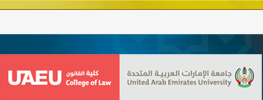Abstract
The concern of the states of the Arabian Cooperation Council to protect the environment in general and the conservation of wild life and their natural habitat in particular stems from the great significance of the need to protect the environment and human life. This attempt is a substantial part of environmental protection since man is the first beneficiary to sustain and continue the well being of the environment for eco balance through the activation of its major components in a natural and continuous manner.
The States of the Arabian Gulf Cooperation Council made individual efforts in the field of protecting wildlife and their natural habitat since the United Nations Conference inStockholmin 1972.
Yet, these individual efforts did not provide sufficient and effective protection. Therefore, collective efforts were needed by all members of the GCC States since wildlife and natural habitat areas are similar in these states.
Collective efforts started with the issuance of a unified system for the protection of wildlife and its development in the States of the Arabian Gulf Cooperation Council in 1997. This effort is considered the beginning of real understanding of the serious and dramatic situation wild life and natural habitat have reached and are about to be experiencing an endangered situation threatening them to extinction. Such situation forced all GCC States to work to issue collective regulations to achieve wildlife conservation and protection.
Despite the fact that these regulations were not mandatory in nature, yet, they drew the attention to the danger of extinction and the need for collective measures. These regulations were mere beginnings, and with the commencement of the 21st Century, the need arose to issue a mandatory convention by all concerned states through which the State becomes responsible for any damages or threats to wildlife and natural habitat.
A convention for the protection and conservation of wildlife and natural habitat was concluded in 2001. After the convention was ratified by the six states, it became easy to implement.
This paper discusses and emphasizes the obligations of all parties who ratified to the convention, whether they are related to the protection of wildlife or natural habitat.
In addition it discusses the requirements needed to implement and layout all protective measures and mechanism to ensure their implementation
Recommended Citation
(2006)
"Legal Protection for Wildlife and their Natural Habitat in the States of the Arabian Gulf Cooperation Council - Dr. Maryam Bint Hasan Al-Khalifa,"
UAEU Law Journal: Vol. 2006:
No.
26, Article 4.
Available at:
https://scholarworks.uaeu.ac.ae/sharia_and_law/vol2006/iss26/4

